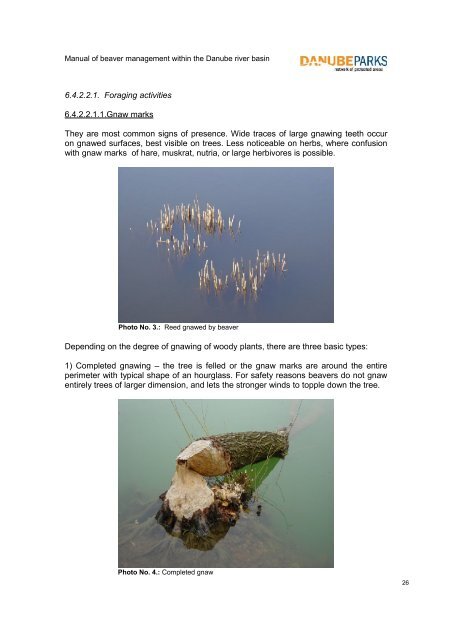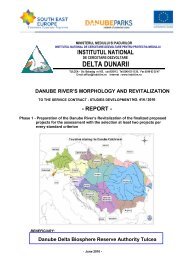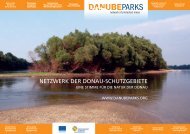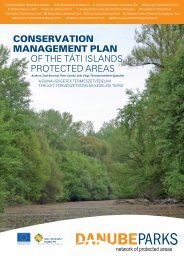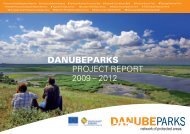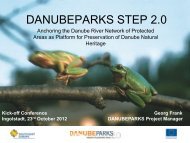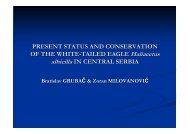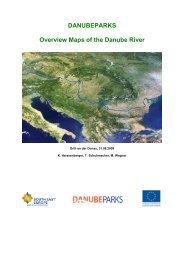Manual of beaver management within the ... - DANUBEPARKS
Manual of beaver management within the ... - DANUBEPARKS
Manual of beaver management within the ... - DANUBEPARKS
- No tags were found...
You also want an ePaper? Increase the reach of your titles
YUMPU automatically turns print PDFs into web optimized ePapers that Google loves.
<strong>Manual</strong> <strong>of</strong> <strong>beaver</strong> <strong>management</strong> <strong>within</strong> <strong>the</strong> Danube river basin6.4.2.2.1. Foraging activities6.4.2.2.1.1.Gnaw marksThey are most common signs <strong>of</strong> presence. Wide traces <strong>of</strong> large gnawing teeth occuron gnawed surfaces, best visible on trees. Less noticeable on herbs, where confusionwith gnaw marks <strong>of</strong> hare, muskrat, nutria, or large herbivores is possible.Photo No. 3.: Reed gnawed by <strong>beaver</strong>Depending on <strong>the</strong> degree <strong>of</strong> gnawing <strong>of</strong> woody plants, <strong>the</strong>re are three basic types:1) Completed gnawing – <strong>the</strong> tree is felled or <strong>the</strong> gnaw marks are around <strong>the</strong> entireperimeter with typical shape <strong>of</strong> an hourglass. For safety reasons <strong>beaver</strong>s do not gnawentirely trees <strong>of</strong> larger dimension, and lets <strong>the</strong> stronger winds to topple down <strong>the</strong> tree.Photo No. 4.: Completed gnaw26


